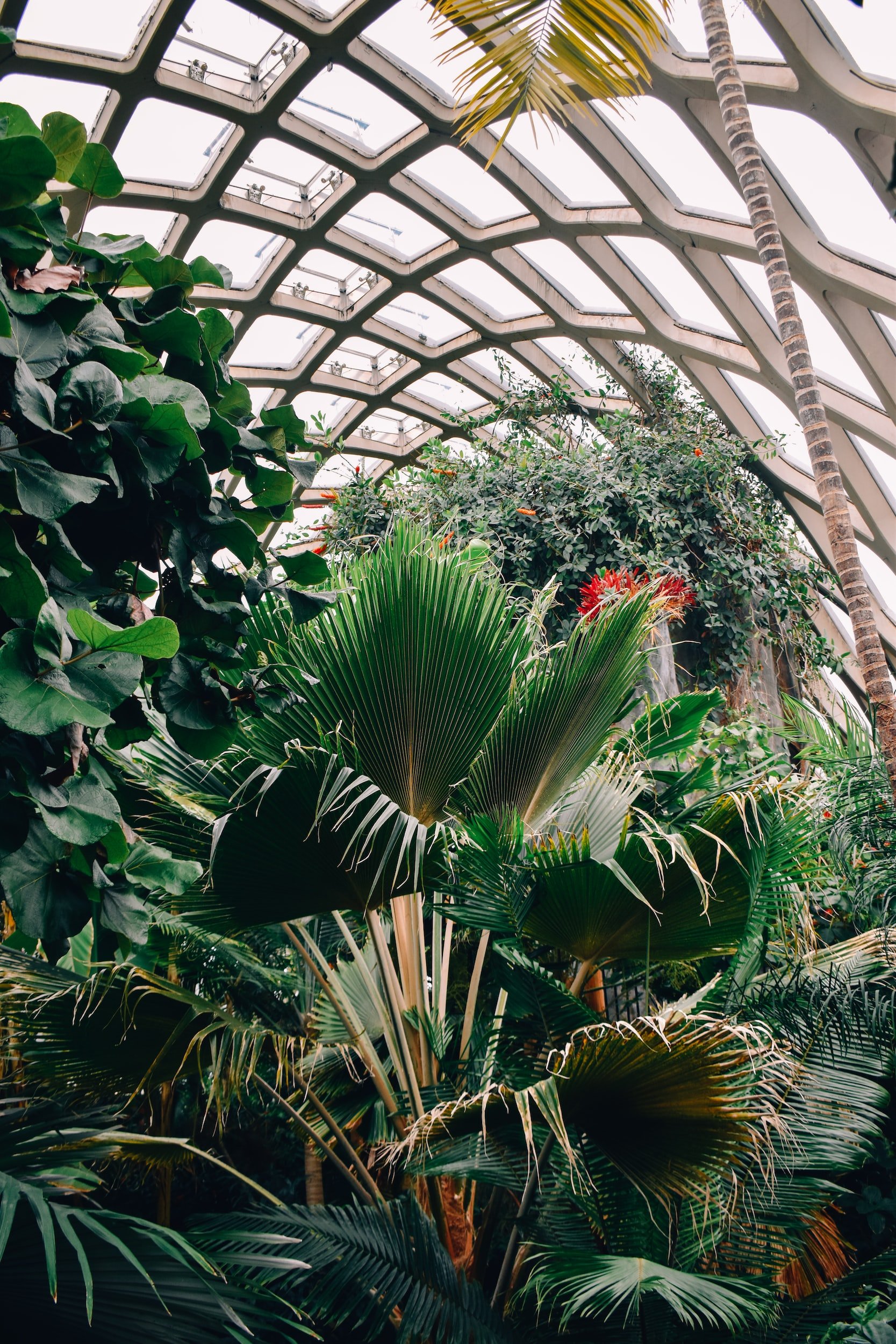When analyzing a property as a potential House Hack opportunity, look for the following features:
Multi-Family properties
Anything that is two units or more is a plus, with more units being better than less. This means a triplex is typically better than a duplex, and a four plex is better than a triplex. Have a search set up for multi family homes, then analyze these homes to find out which will end up giving you the lowest housing expense at the end of the day. The goal of House Hacking is to lower your payment as much as possible, not to buy the prettiest house.
Multi-family properties were literally designed to House Hack, so we always start there. When it comes to analyzing them, there are a few things to keep in mind. First, the neighborhood where they are located is important. Not every multi-family property is created equal. In some areas, multi family properties are only located in specific neighborhoods that are “zoned” for multi-family housing. This means there is likely to be a higher concentration of tenants living in the space which is usually considered less desirable for those looking to invest there.
You’re better off buying multi-family properties in neighborhoods where the multi’s are mixed in with the single family properties. This diversity of style encourages less investors to flood the area with tenants and usually improves pride of ownership, and with it, rising home values. Speak to a local real estate professional or property management company to learn more about zoning laws in the areas you’re interested in.
2. Finished basements
Sometimes you can strike gold when you find a property in an area zoned for single family homes that has a finished basement that’s been converted into a separate living areas. Many times, homeowners finish their basements and include kitchenettes, full bathrooms, and multiple bedrooms. If this portion of the home has a separate entrance, that’s even better.
Properties like this allow the homeowner to live in the basement and rent the main space out to a family. This often allows them to live for free while simultaneously building equity and paying down their mortgage. If the homeowner has a family, they can rent the finished basement out to others and collect easy rent money while not having to share their living space. Finished basements are one of the top things to look for in your search.
3. Additional Dwelling Units (ADU’s)
ADU’s are permitted structures added to a property, usually in the backyard, where plumbing, electrical, and other necessities required for habitation are available. These are also referred to as “in-law units’ or “guest houses”. The ADU is a space that can be lived in, or rented to create additional revenue. ADU’s are a great asset to look for in a House Hack property.
Whenever analyzing a property, keep in mind not all ADU’s are permitted. You can check with the local city department to see if permits were ever pulled and if city ordinances allow for the space to be legally rented out. If they are, this is a great property to look deeper into!
4. Multiple Bedroom Houses
If you can’t find any multi-family properties (or properties that have been modified to function as such), you’re next best bet is to find a single family home with as many bedrooms as possible. Since the bedrooms are what you’ll be renting out, it’s important to keep in mind a home with more square footage but less bedrooms isn’t necessarily better.
The same principle applies as in multi-family properties. Three bedrooms are better than two, and four bedrooms are better than three. Concentrate your search on the homes with the most amount of bedrooms that are available in your price range, then work backwards from there. Sometimes buying a more expensive home with an additional bedroom to rent out makes your overall housing cost much lower.
5. Areas Easily Converted to Bedrooms
If you can’t find a property with a large number of bedrooms, you make one. Properties with dining rooms, living rooms, dens, bonus rooms, or lofts can often be converted into bedrooms for a few thousand dollars. This adds significant value to the home’s price, while also adding income that can be generated from the additional living space.
I target 3 bedroom homes with more square feet than their neighbors. If you notice the usual 3 bedroom home is around 1500 square feet, you should keep an eye on anything bigger than that. An 1800-2000 square foot home with only 3 bedrooms may have space that can easily be converted into more rooms. This is especially helpful if you pay for a 3 bedroom house but end up with a 4 bedroom house. The savings really add up when you consider the mortgage interest you’ll be saving over a long period of time.
6. Houses Near Public Transportation
When looking for something to House Hack, it’s important to keep in mind that unit/bedroom count is important, but it’s not the only thing that’s important. Having all this rentable space is of zero use to you if there is no one to rent it out. You need to be targeting homes in desirable areas of town, with strong economic bases-all of this needs to be close enough to public transportation your tenants are going to want to actually live there.
If you buy a great deal in an area nobody wants to live, finding tenants to help you House Hack is going to be an uphill battle. For this reason we start with the best parts of town then look for properties that will work for our goal. If we do the reverse and start with the properties that make the most sense on paper, we end up putting large amounts of energy into analyzing properties that work in theory but not in practice.
7. Houses in Areas Without Restrictions
Many HOA’s (Home Owner Associations) do not allow for non-owner occupancy. These areas would not make sense to target House Hacking Opportunities. On a similar note, many areas do not allow for short term rentals (like VRBO or AirBnb). These areas can limit your options to generate revenue and have to be considered on a case by case basis. Not every area is equal when it comes to House Hacking.
Other things to keep an eye out for are adequate parking spaces, safe neighborhoods where property crimes are low, and areas that aren’t too noisy to sleep (like near a railroad, airport, or freeway). Make sure the area you are buying in will be a place tenants want to live.
8. Houses With Adequate Living Space
While the number of bedrooms is the first thing we look for, we also want to concentrate on houses with adequate living space to allow your tenants to live comfortably. Homes with upstairs lofts, family AND living rooms, dining rooms, breakfast nooks, outdoor deck areas, and other features that allow your guests to lounge comfortably and not be confined to their bedrooms are nice selling features that allow you to charge more for rent and keep tenants for longer periods of time.
Bigger houses with extra bathrooms and multiple bedrooms make the best House Hack Opportunities. Combining this with additional living space will allow you to find better long term tenants and have a smoother process overall.
If you've been wanting to buy a home closer to work, in a better school district, or in an otherwise expensive neighborhood, this may be the solution you've been needing. If you are an aspiring real estate investor who wants to break into the market but doesn't want to carry the financial burden of a mortgage payment, this could work for you too. Your house isn't just a home, it's also a revenue generating asset!








































![black-bear-in-fall_0[2].jpg](https://images.squarespace-cdn.com/content/v1/5802a7ead1758e435b323757/1632512897381-8MDMADATJ3MX8TS93LH0/black-bear-in-fall_0%5B2%5D.jpg)
![homepage_image[1].jpg](https://images.squarespace-cdn.com/content/v1/5802a7ead1758e435b323757/1612303710370-7O3E5O32TP5FHNQ39BTI/homepage_image%5B1%5D.jpg)
![HOME-OFFICE-FINAL[1].jpg](https://images.squarespace-cdn.com/content/v1/5802a7ead1758e435b323757/1612302620921-NSI2OMOV3VCUOYA3L822/HOME-OFFICE-FINAL%5B1%5D.jpg)
![HOME-OFFICE-FINAL[1].jpg](https://images.squarespace-cdn.com/content/v1/5802a7ead1758e435b323757/1612302565106-OF3KOSLJTA7IUUL9SN9P/HOME-OFFICE-FINAL%5B1%5D.jpg)
![PHOTO-STUDIO-FINAL[2].jpg](https://images.squarespace-cdn.com/content/v1/5802a7ead1758e435b323757/1612302668314-TRG3SD3VAUYFQSZA4238/PHOTO-STUDIO-FINAL%5B2%5D.jpg)
![LIBRARY-FINAL[1].jpg](https://images.squarespace-cdn.com/content/v1/5802a7ead1758e435b323757/1612302699490-HIPRLN8YMT0N7FMMOKHP/LIBRARY-FINAL%5B1%5D.jpg)
![MUSIC-ROOM-FINAL[1].jpg](https://images.squarespace-cdn.com/content/v1/5802a7ead1758e435b323757/1612302721797-VWRSB1UV5KTTQ2NAJ7GT/MUSIC-ROOM-FINAL%5B1%5D.jpg)
![MEDITATION-ROOM-FINAL[1].jpg](https://images.squarespace-cdn.com/content/v1/5802a7ead1758e435b323757/1612302741574-KKYMN2OEXJH9QECK6AT0/MEDITATION-ROOM-FINAL%5B1%5D.jpg)
![SCREENING-ROOM-FINAL[1].jpg](https://images.squarespace-cdn.com/content/v1/5802a7ead1758e435b323757/1612302760823-XE9JK3UJ4XD5CR6NP9JQ/SCREENING-ROOM-FINAL%5B1%5D.jpg)
![GAMEROOM-FINAL[1].jpg](https://images.squarespace-cdn.com/content/v1/5802a7ead1758e435b323757/1612302778088-WEUIW69IDPMH1N1J1ATI/GAMEROOM-FINAL%5B1%5D.jpg)
![HOME-GYM-FINAL[1].jpg](https://images.squarespace-cdn.com/content/v1/5802a7ead1758e435b323757/1612302799666-9BY5MJ2SWRQ0K4JGZ84N/HOME-GYM-FINAL%5B1%5D.jpg)
![MASSAGE-STUDIO-FINAL[1].jpg](https://images.squarespace-cdn.com/content/v1/5802a7ead1758e435b323757/1612302829666-NSTM3B4QXQG2X4LJESYU/MASSAGE-STUDIO-FINAL%5B1%5D.jpg)
![WINE-CELLAR-FINAL[1].jpg](https://images.squarespace-cdn.com/content/v1/5802a7ead1758e435b323757/1612302850691-KH10M4L3DYECGCHKEXKH/WINE-CELLAR-FINAL%5B1%5D.jpg)
![PLAYROOM-FINAL[1].jpg](https://images.squarespace-cdn.com/content/v1/5802a7ead1758e435b323757/1612302871075-6RVIF1BV2XP91TBPDBU9/PLAYROOM-FINAL%5B1%5D.jpg)
![TEEN-HANGOUT-FINAL[1].jpg](https://images.squarespace-cdn.com/content/v1/5802a7ead1758e435b323757/1612302890645-5QJVX0BVK734D18KJPJT/TEEN-HANGOUT-FINAL%5B1%5D.jpg)